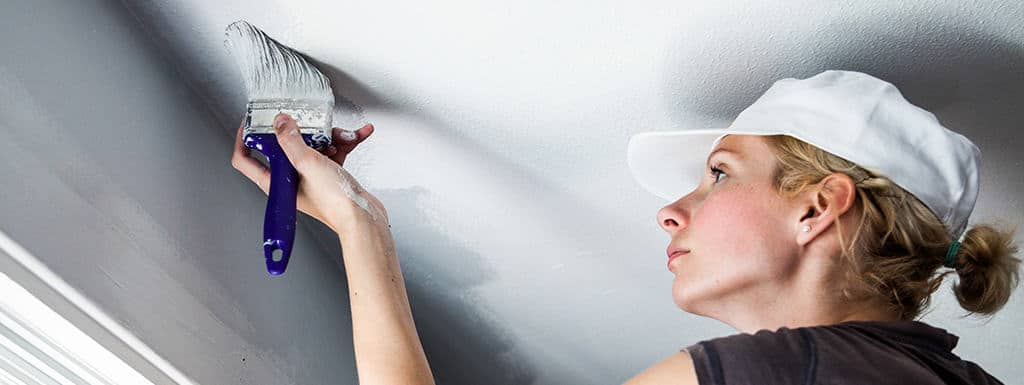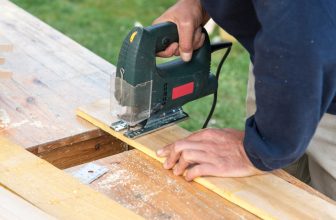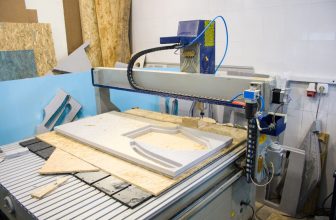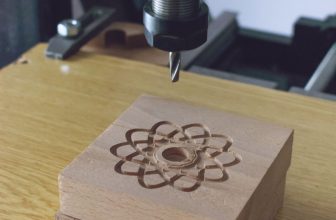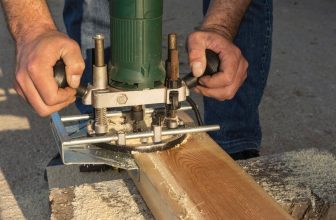Contents
- Which Paint, Where?
- Selecting Tools for the Job
- Preparation
- Painting
- Cleaning Up
- Checklist
1. Which Paint, Where?
There are two types of paint available for interior surfaces: water based or solvent based. Within each paint type there are also several finishes to choose from. Your choice depends on the area that you are painting.
Water based paints, or acrylics, are the popular choice for walls and ceilings. They are easy to apply, have very low fume levels, are touch dry in 20 minutes, can usually be re-coated in two hours and they clean up in water. Solvent based enamel paints must be cleaned up with mineral turpentine or an equivalent product. They have stronger fumes. They are also generally considered to provide a tougher, more hard-wearing surface than acrylic paints. Enamels are often preferred for areas that need constant cleaning, such as doors and furniture or walls subjected to frequent dampness. Kitchens, bathrooms and laundries may be worth the extra time that it takes to apply enamel.
The finish of your paint generally depends upon the purpose of the room you are painting. Gloss and semi-gloss finish paints provide a hardy surface for high traffic areas such as the kitchen, family rooms, bathrooms or children’s rooms where frequent cleaning is likely.
Flat or low sheen finishes are commonly used for more formal, less frequented areas like dining rooms, bedrooms and lounge rooms and where the light matt effect subdues the atmosphere.
For ceilings, try a special ultra flat acrylic known as ceiling white that helps to mask imperfections. Choose a formulation that does not drip. A tint can be added to match your overall colour scheme. Some decorators suggest using a tint that is a half or quarter shade of the colours on their walls for the ceilings so as not to have too sharp a contrast between the walls and ceiling. Remember to record the formula of your paint tint on the paint so that you can re-order it at another time.
2. Selecting Tools for the Job
Make your job easier by assembling all the tools and materials you need before you start. You don’t want to interrupt your work by having to dash off to your local Mitre 10 to buy the missing item.
Choose brushes with no gaps in the bristles and with a springy feel to them. A sparse or limp brush will have you dipping into the paint more often, will be hard to control and will leave a streaky finish.
The choice of roller sleeve depends on the surface you’re painting as well as the paint you’re using. For smooth surfaces and higher gloss paints, use a shorter nap sleeve (around 10 mm). For rougher surfaces and lower gloss paints, use a medium nap (20mm). For very rough surfaces, use a long nap roller (around 35mm).
Select a roller frame with a threaded handle if you want to fit an extension to it. This will take the backache out of reaching ceilings and high walls.
3. Preparation
Preparation is the key to a good end result. It not only speeds up the finishing coats, but also lays a smooth base, ensuring a fine result.
It’s worth taking time to mask all windows, door frames and light switches, etc, before you start painting – it will provide nice sharp lines and means you won’t get paint on these areas.
New Surfaces
Even new surfaces need to be sanded smooth and then dusted off. Prime raw timber surfaces with a primer product before repairing any nicks with timber filler. Check the plaster and plasterboard for any nail depressions or cracks, and fill these with interior filler, overfilling so you can sand it back to a smooth, even finish. Then apply an undercoat like Dulux Undercoat and Wallboard Sealer. Dulux Mouldshield is good to use in an area prone to dampness.
Painted Surfaces in Good Condition
If there is no flaking or peeling, wash the surface down well with sugar soap to remove dirt, grease and smoke stains. If there’s any mould use sugar soap, then treat with an anti-mould preparation. Check for any cracks and fill with interior filler. Overfill, then sand to an even finish. If the existing surface is an enamel paint, sand thoroughly to remove gloss. Now undercoat.
Painted Surfaces in Poor Condition
Scrape away flakes and blisters and then smooth edges with sandpaper. Touch up bare areas with an undercoat or primer. Use a heat gun (but not around windows or you will break the glass) or chemical paint stripper to soften the old paint, then scrape with a scraping blade. Really bad surfaces should be scraped right back to a bare surface. Apply an undercoat to the bare surface.
Tape Test – If you’re unsure just how bad the old surface is, use the tape test. Scratch the paint and press on a small piece of masking tape, then rip it off. If paint comes off with the tape, the surface should be stripped back.
4. Painting
Protect the floor and any furniture that you are unable to move with plastic drop sheets. (Dripped paint may seep through ordinary bed sheets and onto the surface beneath.)
Before you start, it is important to mix the paint thoroughly. Use a flat paddle stick or ruler and stir from the bottom upwards (not just around) until all the paint is quite smooth.
Ceiling first.
Start with the ceiling. Paint the cornices with a brush. Fill in the main area of the ceiling with a roller, working from the darkest corner of the room towards the light. Work in narrow strips so you clearly see where you stopped and started. Paint around ceiling light fittings, then complete the rest of that band. Do not load the roller too heavily or it will drip down the roller frame.
The walls.
Start in a corner using a paint brush to cut into wall edges, window and doorframes. Use a roller to fill in the main areas, working along the wall evenly in an up and down motion.
Work from right to left unless you are left handed.
For window frames, doors and door frames, do the edges first, then the face, returning to the edges to lightly feather off any surplus paint with the tip of the brush. You’ll probably be using an enamel here.
5. Cleaning Up
- Clean brushes and rollers using turpentine for solvent-based paints, or water for acrylic paints. For brushes, work the bristles in the turpentine or water until all paint has been flushed out. Make sure you get all the paint out of the handle, as this will increase the life of your brush. Clean rollers by flushing out under running water or by working turpentine through the nap. Then wash in warm soapy water and rinse well. Always store brushes flat or hanging up, never standing on the bristles. Set rollers on end or hang them, otherwise the nap of the roller is flattened.
Checklist
- Undercoat
- Paint in the finish and quantity to suit your job
- Paint brushes
- Roller frame and roller tray to suit
- Roller covers to suit roller frame and paint finish
- Extension handle for roller frame
- Primer or sealer
- Interior filler (for cracks and imperfections)
- Filling blade (for applying filler)
- Scraper blade
- Drop sheets
- Utility knife
- Sugar soap, sponge and gloves
- Stepladder
- Flat paddle or ruler
- Sandpaper
- Masking tape
- Clean up rags for spills and drips
- Turpentine (if using solvent-based paints)

